My route to the roof of the world started in the App Store. Instead of filling out the paperwork to apply for a climbing permit, my first step was to download the software needed to enter the virtual world.
Because – as the 2024 Everest climbing season comes to a close, after another year of overcrowding and fatalities – it turns out you don’t actually have to set foot on the hallowed slopes to reach the 29,032-foot summit – thanks to release of a new virtual reality experience.
The man behind The Quest: Everest VR, which cost an estimated €250,000 to make, is Alex Harz, an American filmmaker who realized his childhood dream by climbing Everest in 2018. The film combines footage from five different real expeditions. .
After messing around with the download progress, I put on the Meta Quest 3 headset for the first time. I’ve climbed many mountains and would feel right at home plotting routes, organizing packing lists for expeditions, and planning the logistics for a trip. However, all those skills turned out to be worthless when I started climbing Everest in virtual reality. I’ve never entered the virtual metaverse before and it was completely foreign – a world of cartoons, moving parts and invisible boundaries to keep me from tripping over the kitchen table.
Using two handheld controllers, I was able to navigate the software and download the three-part series to begin the abbreviated 52-day journey to Everest. The first nine-minute episode takes viewers from Kathmandu to the mountainous Khumbu region where the hiking trail begins, in the town of Lukla. The hair-raising flight into the world’s most dangerous airport is noticeably missing from the footage, but once you get moving you’ll soon be immersed in the magic of Nepal’s most famous region.
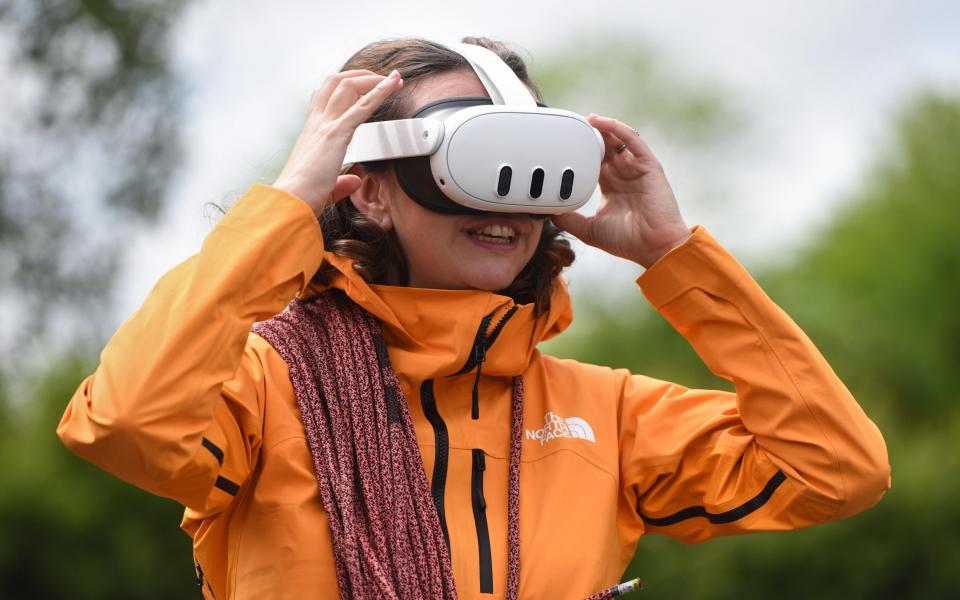
I found standing, with the ability to rotate 360 degrees, to be the most immersive testing method, but it can be done just as easily from the comfort of your couch.
Harz’s simple yet informative commentary brings the experience to life. He shares the “melodic memories of life on the road” and details key waypoints. Viewers will also be treated to a seat during a traditional puja ceremony – a Buddhist tradition performed before each climb. The sounds of clanging cowbells, stomping yak hooves and fluttering prayer flags brought back memories of my own visit to the Khumbu. Along the way I recognized the streets of Namche Bazaar – the main Sherpa town on the route to Everest – the iconic slopes of Ama Dablam above Dingboche and the tin-roofed buildings of the last inhabited outpost of Gorakshep.
The simple visuals are refreshing – unlike the vast library of cinematography that tells the stories of Everest, in virtual reality you see the experience from a more personal angle. It’s a front-row view of every weary climber’s face and every piece of trash left behind. When you reach Camp Four, you see firsthand the sea of abandoned tents and oxygen tanks that so often make the news, without drones or Photoshop to distort reality.


The idea of Harz was born from a passion for climbing and video games. “I realized that I shouldn’t sacrifice all the time, money, dedication and risks required to make my Everest dream a reality just for a few moments of witnessing the most breathtaking views imaginable. There had to be a bigger purpose,” he said.
“[I have a] long-standing fascination and love for point-of-view style video games (Halo, Rainbow Six, Borderlands, Doom) because these types of games put you right into the action… I wanted to offer a global audience an experience closest to the comes close to living on Mount Everest, without all the rigorous training, planning and high risks required to physically get there yourself.”
Much has been written about the terror of the Khumbu Icefall – the 4-mile waterfall of ice that marks the start of the route to the summit from Everest Base Camp. In his account of the first successful ascent in 1953, expedition leader John Hunt described his presence on the mountain: ‘This labyrinth of broken ice moves, its surface changing, if not at the pace of the water, then at least at a speed that ensures it is a dangerous problem to overcome.”
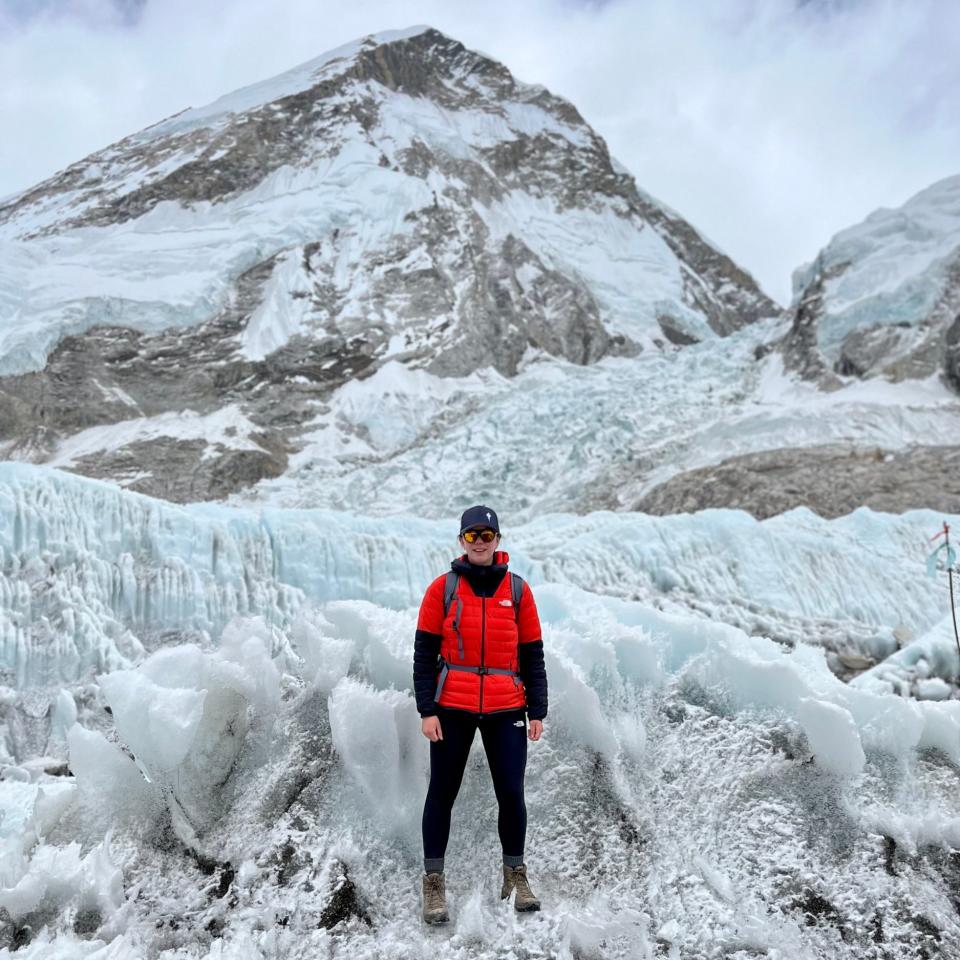

With the headphones on, at the start of the eight-minute episode two, the size of the ice cliffs and the depth of the yawning crevasses came to life in astonishing clarity. All those words I had read finally resonated when Harz described the route as “the climber’s equivalent of playing Russian roulette.”
Further on, Harz takes the camera over one of the many aluminum ladder bridges, placed by Sherpa teams so climbers can cross gaps in the glacier. As I stare into the cavity, the depths seem endless – and my legs wobble. I thought about the local Nepalese guides who risk their lives every year and often remain underappreciated. As they continue, viewers get a sense of the overwhelming size of the Western Cwm and its slow progress along the 1,500-metre Lhotse Face.
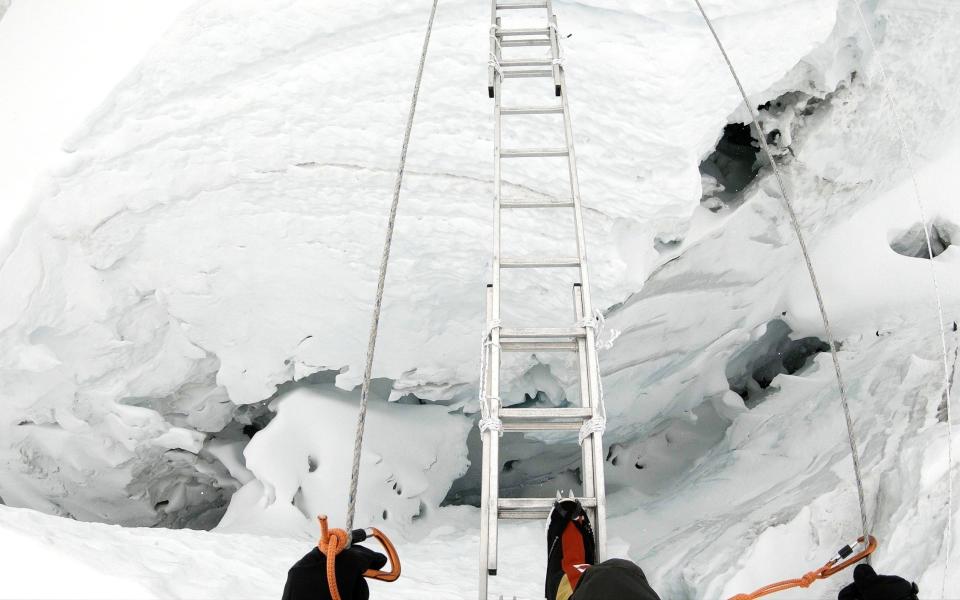

Episode three is where the magic happens. In virtual reality, it takes less than 10 minutes to ascend from the South Col at 25,938 feet to the summit (29,032 feet) – in reality it takes an average climber up to nine hours. As you progress along the route, more familiar sights come into view: the South Summit, where you see the first full profile of the true summit, and the Hilary Step. I turned to see the summit of Lhotse (27,940 feet), looked left at the vast landscape of Nepal and right at the steep Kangshung Face, which drops away into Tibet.
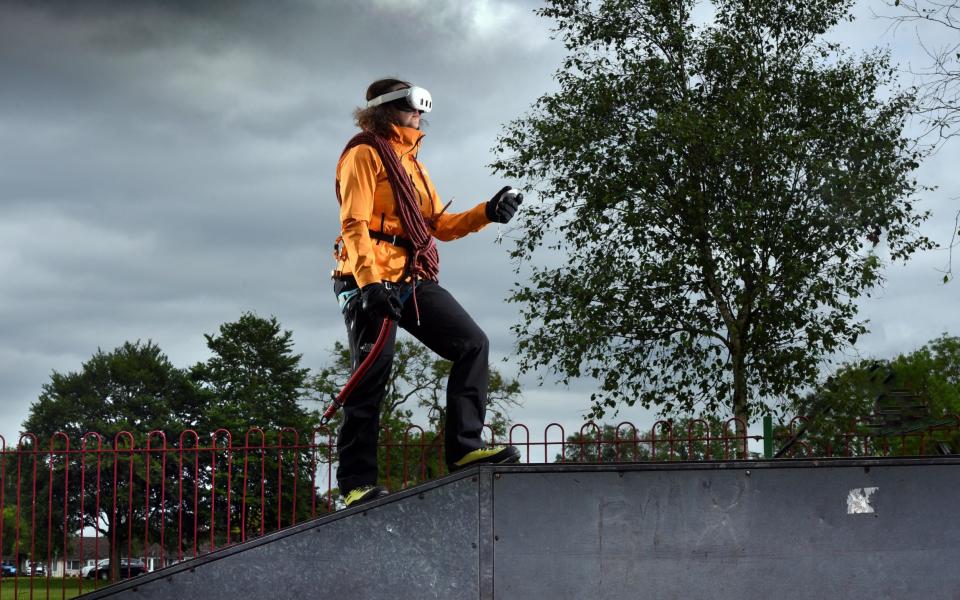

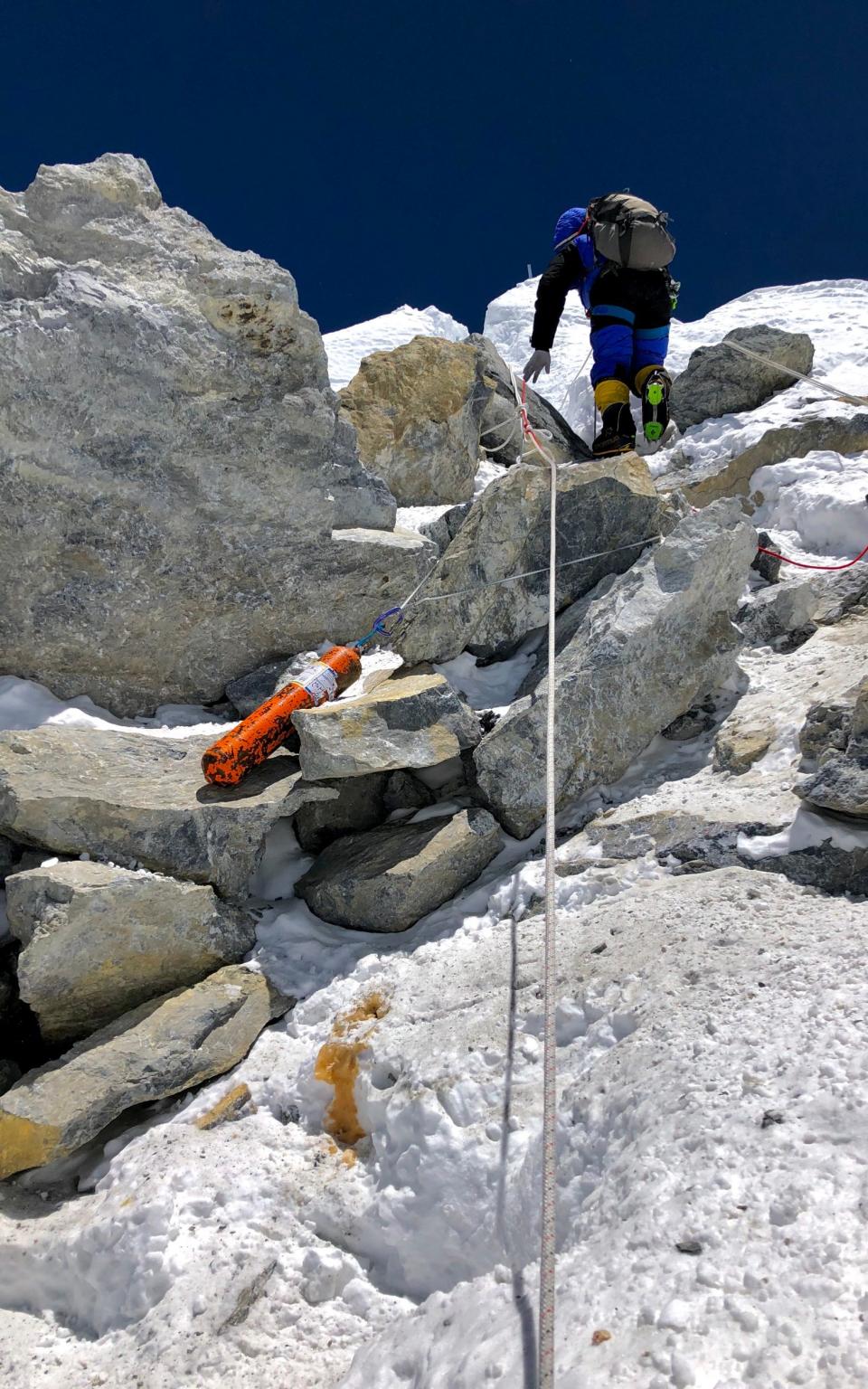

I paused the footage as Harz climbed the Hilary Step and thought back to the stories of how Sir Edmund Hillary and Sherpa Tenzing Norgay first broke new ground in this field. Climbers now use fixed ropes, but in 1953 the duo only had ice climbing equipment. First Hillary and then Tenzing climbed the barrier as if they were climbing a rock chimney – going up bit by bit with their backs against the rock face and their feet wedged into a crevice. From the comfort of my living room on a warm May evening, headphones on and breathing normally, my appreciation for the early pioneers of mountaineering was resolute.
Perhaps most surprisingly – with early reports estimating that 600 successful summit attempts have been made this season – when you reach the summit it is empty (in reality Harz spent 45 minutes there alone with his guide Tashi Sherpa). There’s a giant cornice hanging off the edge, but the “beautiful snow cone summit,” as described by Hillary, is decorated with tributes and prayer flags and surrounded by a panorama of the most dramatic peaks in the world. Fewer than one in a million people experience the view in real life – in virtual reality it is accessible to everyone.
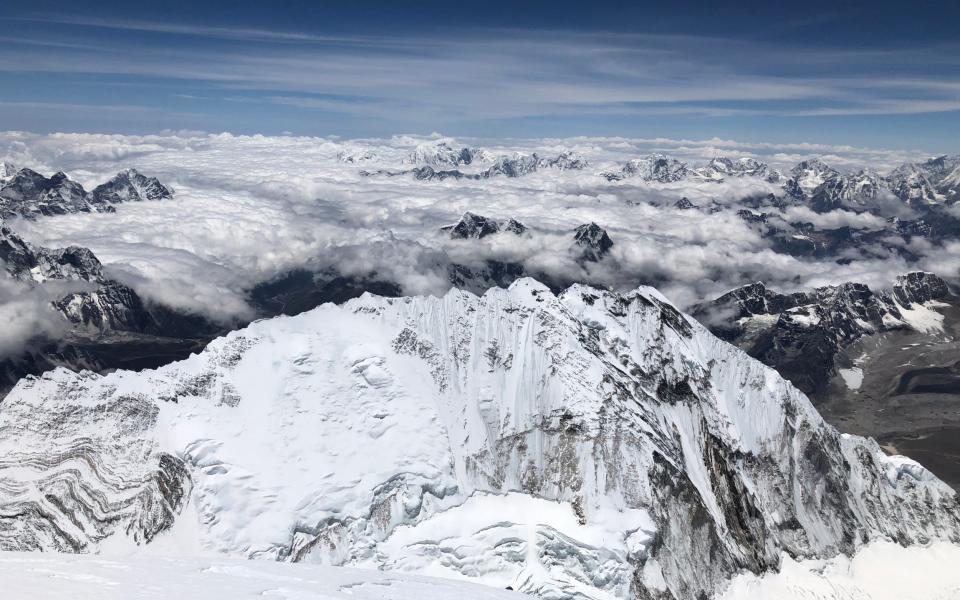

The Quest: Everest VR is a unique way to learn more about the highest mountain in the world. For anyone, like me, with an Everest obsession, it brings to life a mountain that has captured the imagination since the 19th century in a way that blockbusters and social media often miss.
Essentials
The Quest Everest VR can be experienced on the major virtual reality platforms, as well as in 2D VR360 for computers, mobile phones and tablets. For more information and where to watch, visit TheQuestEverest.com.
Lucy used a Meta Quest 3 headset, available from £479.99